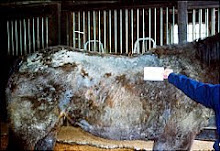
Journal Article
Familial and Social Influences on Juvenile Gambling Behavior
Journal of Gambling Studies
Publisher Springer Netherlands
ISSN 1050-5350 (Print) 1573-3602 (Online)
Issue Volume 13, Number 3 / September, 1997
DOI 10.1023/A:1024915231379
Pages 179-192
Subject Collection Humanities, Social Sciences and Law
SpringerLink Date Wednesday, November 24, 2004
Familial and Social Influences on Juvenile Gambling Behavior
Rina Gupta1, 1 and Jeffrey Derevensky1
(1) McGill University, Canada
Abstract Social learning theory maintains that individuals model, learn and maintain behaviors that are observed, appealing and reinforcing. As such, parents and family members can often serve as significant models for gambling. Four hundred and seventy seven children between the ages of 9 and 14 completed a questionnaire inquiring about their gambling activities, including where and with whom gambling occurs, as well as information concerning their perceptions of their own gambling behavior. Results indicate that 86% of children who gamble regularly reported gambling with family members. Fifty-three percent of students who gambled within the previous 12 months reported gambling with their siblings, 40% gambled with their parents, 46% gambled with other relatives, and 75% gambled in their own homes. Students' responses also indicated gambling with their friends (75%), gambling alone (18%), and with strangers (8%). As children's age increases they tend to gamble more at friend's homes and at school. Prevalence rates indicated that 81% of the total sample had gambled at one point in their lives and 52% of those children reported gambling once a week or more. Eleven percent reported that gambling makes them feel important, 27% feel they gamble more than they desire to do so, and only 10% of the grade 8 students fear being caught gambling, suggesting gambling activities to be a socially acceptable behavior. Several clinical and research questions are addressed.

















No comments:
Post a Comment